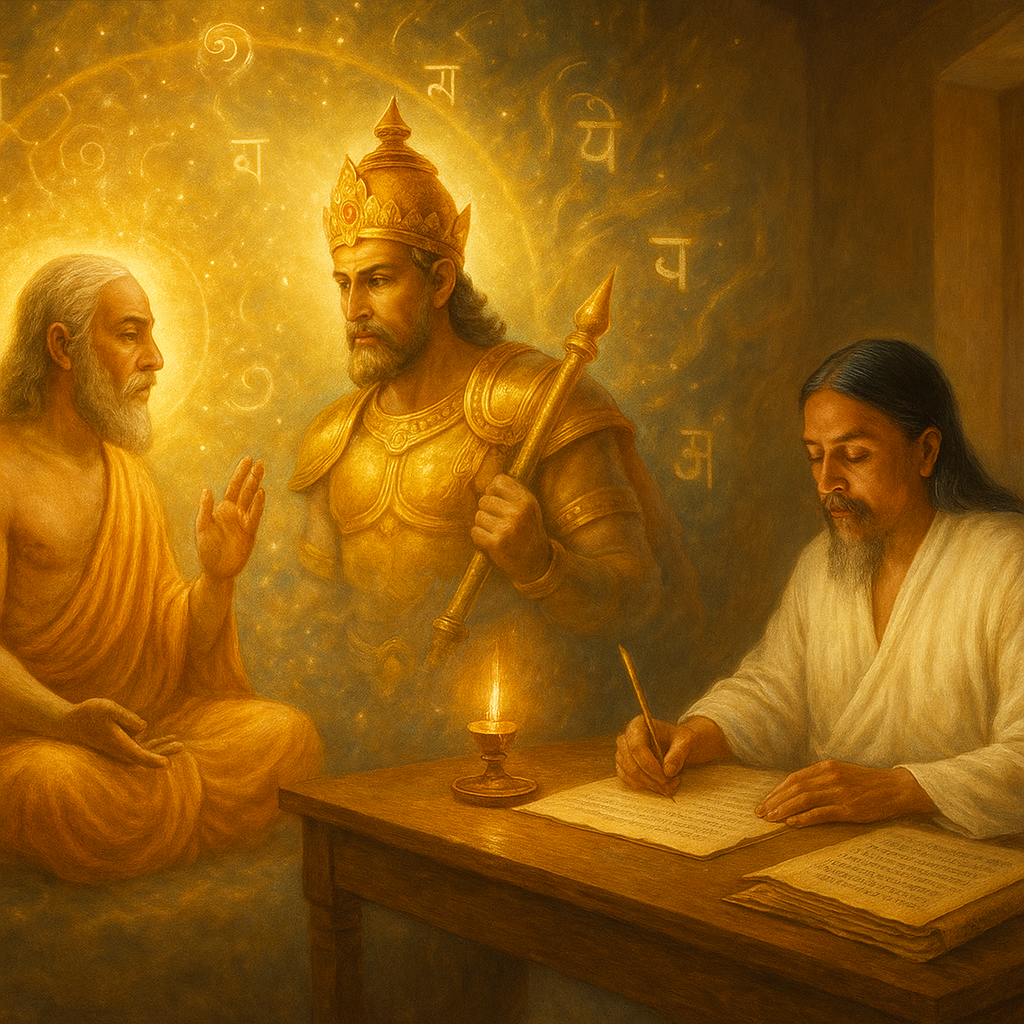Understanding Buddhi, Ahaṁkāra, and Manas through the Logic of Guṇas
The chart (based on your description and context) illustrates the Samkhya philosophical model of how Prakṛti’s three guṇas—Sattva, Rajas, and Tamas—combine in various intensities to form the first evolutes of manifest creation when consciousness (Puruṣa) comes into proximity with matter (Prakṛti). Here’s a detailed breakdown of the logic and argument behind the table:
🟡 Core Philosophical Framework:
- Prakṛti (Nature): The unmanifest, primal matter composed of the three guṇas.
- Puruṣa (Consciousness): The eternal, passive witness and knower—pure awareness.
- Guṇas (Constituents):
- Sattva – light, clarity, knowledge
- Rajas – activity, motion, passion
- Tamas – inertia, obscuration, dullness
🧠 Table Logic: The Evolution of Subtle Matter
The table shows how the dominance of different guṇas leads to the formation of different evolutes (first forms) of the mind-stuff (chitta):
| Evolute | Sattva | Rajas | Tamas | Dominant Guṇa |
|---|---|---|---|---|
| Buddhi (Intellect) | 3 | 2 | 1 | Sattva |
| Ahaṁkāra (Ego) | 1 | 3 | 2 | Rajas |
| Manas (Mind) | 2 | 1 | 3 | Tamas |
- The score of 3 indicates the dominant guṇa in the respective component.
- The values show the proportional influence of each guṇa.
- Each evolute forms a part of chitta, or mind-stuff, in subtle matter (sūkṣma-prakṛti).
- These are not yet gross elements (like earth, water) but the subtle mental faculties through which Puruṣa interacts with the world.
✨ Philosophical Implication:
- These three evolutes together form the antahkaraṇa (inner instrument):
- Buddhi allows discrimination and decision-making.
- Ahaṁkāra gives the sense of “I” or individuality.
- Manas organizes sensory inputs and facilitates mental processing.
Once these subtle evolutes are infused with Puruṣa’s light (conscious awareness), they become instruments of knowing, even though they themselves are unconscious by nature (as products of Prakṛti).
🧩 Argument Summary:
- Prakṛti alone cannot evolve without the presence of Puruṣa.
- Once Puruṣa is present, Prakṛti’s guṇas shift from equilibrium and evolve into complex layers of reality.
- The first layer is subtle and mental, not physical.
- The combination of guṇas determines the nature of the evolution:
- More Sattva → intellect
- More Rajas → ego
- More Tamas → mind
🔎 Deeper Insight:
This model offers a metaphysical psychology: our thoughts, ego, and intellect are not random—they are structured evolutions of matter influenced by specific qualities of nature and illumined by spirit.
Understanding Buddhi, Ahaṁkāra, and Manas through the Logic of Guṇas Read More »

